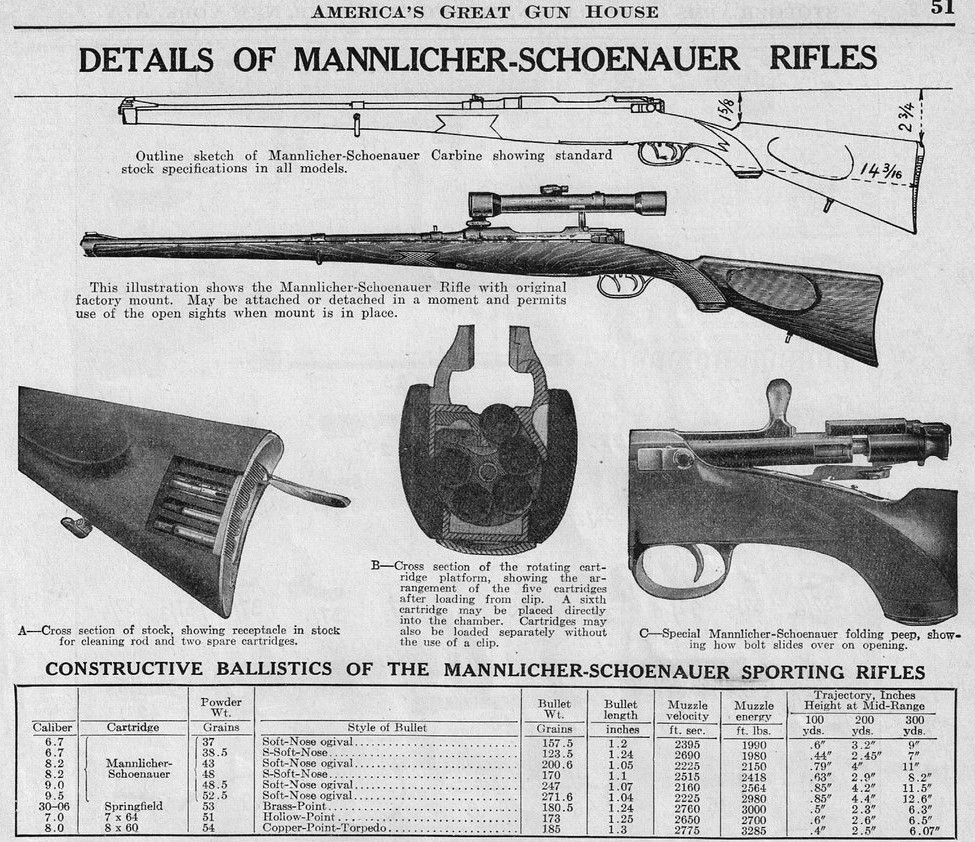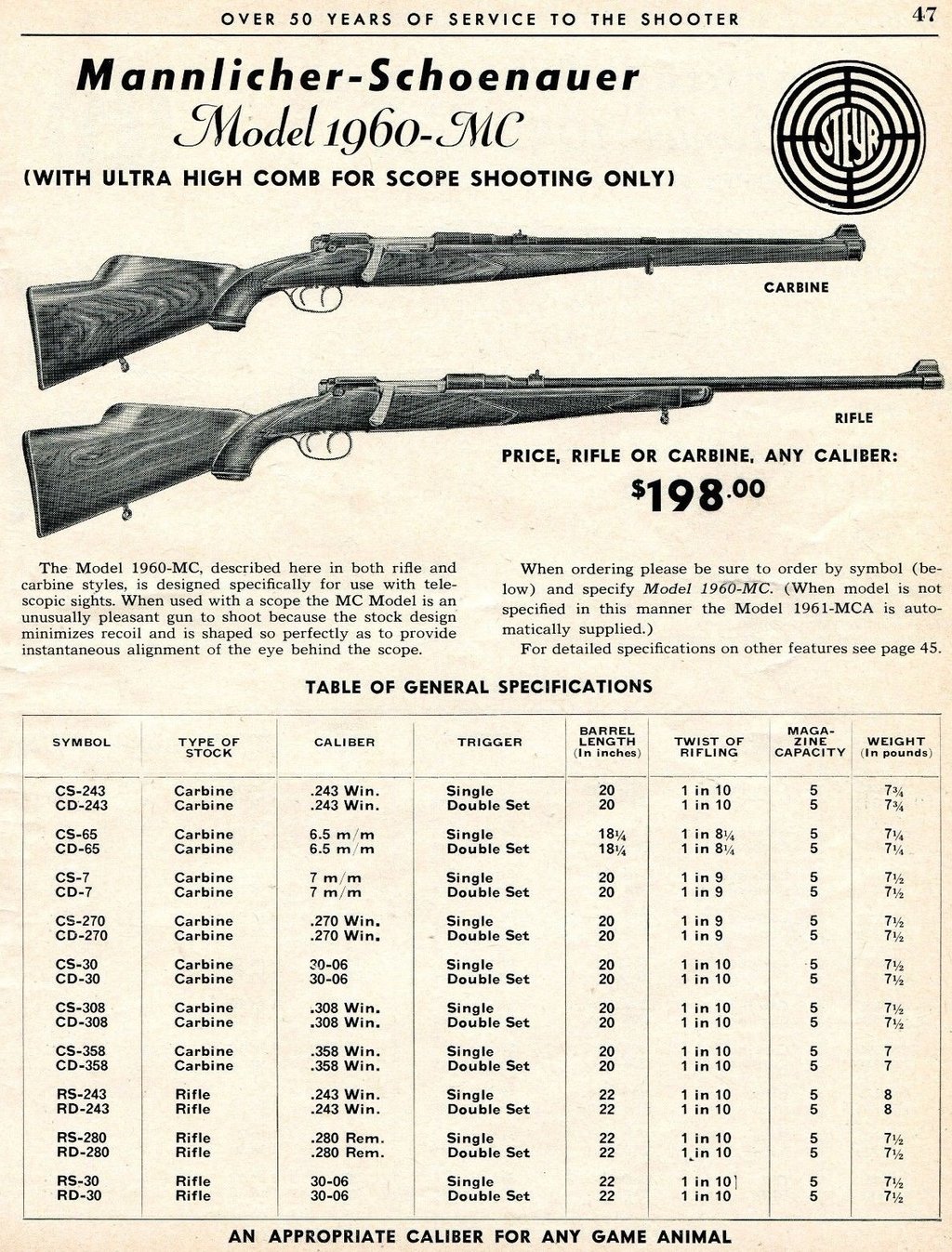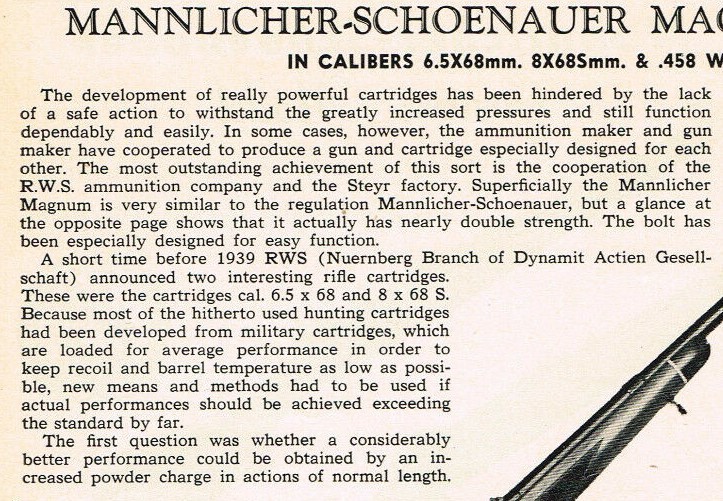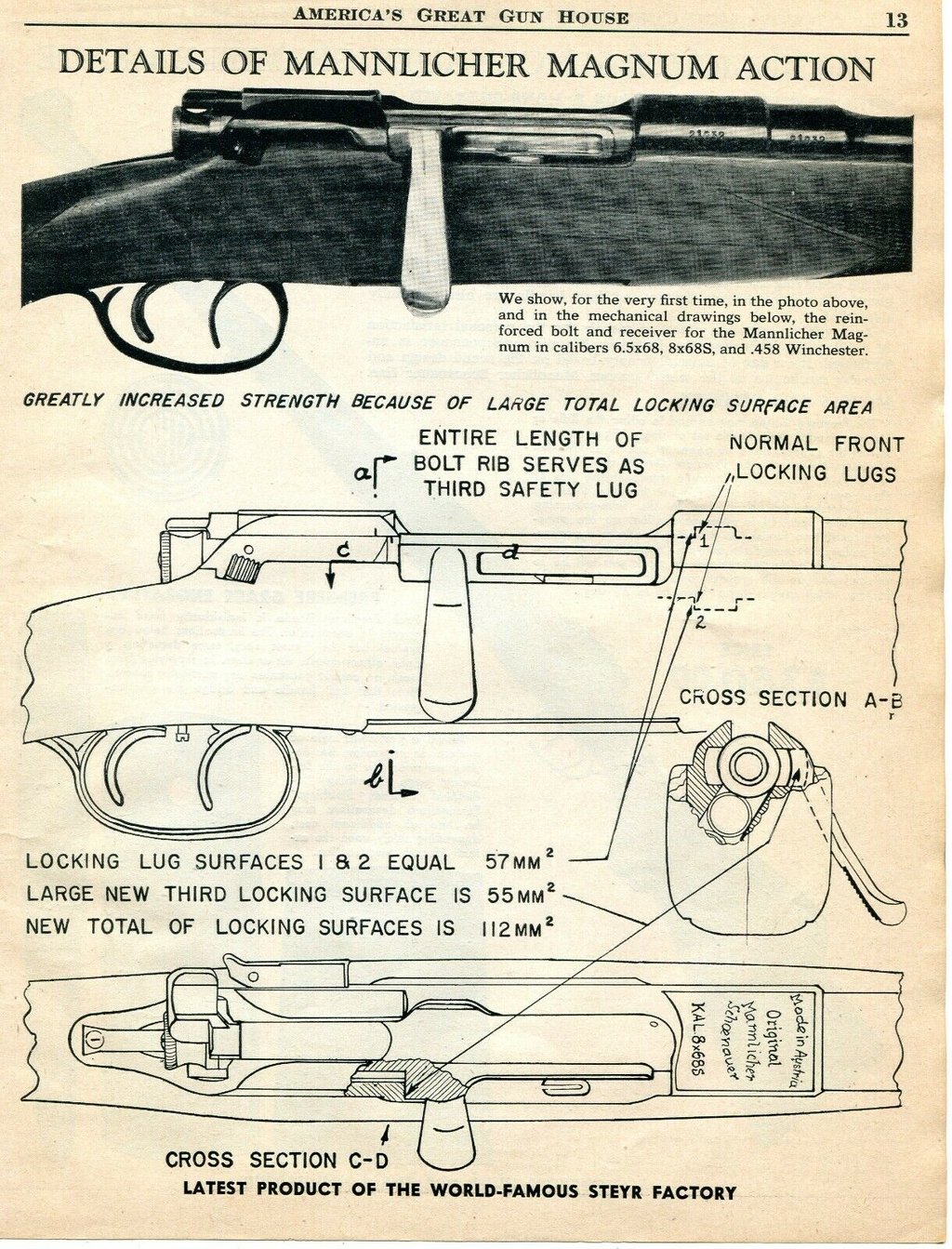My knowledge of the Mannlicher Schoenauer rifles and stutzen (full stocked carbine) models is primarily focused on the pre WW2 models of M1900, M1903, M1905, M1908, M1910, M1924, 'M1925' and is a 'work in progress' but I do have some knowledge of the military MS and of the 'postwar' models.
Detail from 1939 Stoeger Catalog:
The early models of sporting rifles and stutzen each had a designation which corresponded with the MS proprietary cartridge for which they were chambered, hence all M1903 (as well as M1900 prototypes and Y1903... 'Greek' military contract and variants) were originally 6.5X54 (referred to as 6.7 on ballistics chart above), M1905 were 9X56, M1908 - 8X56 (8.2 on chart above), and M1910 - 9.5X57.
The Model 1924 'Sequoia' was made for export to the U.S. and had a longer 'action' and magazine to accommodate the 'U.S. Cartridge of 1906', or .30-'06. They didn't sell well and many were rechambered for other cartridges. Production continued on the new size (oft referred to as 'M1925' by collectors) in various chamberings until WW2 intervened. These and subsequent models were no longer cartridge specific. Stoeger referred to them as 'High Velocity'. Those manufactured during the Anschluss, or Nazi annexation of Austria (1938 - 45), bore a 'Made in Germany' roll stamp in place of the "Made in Austria" stamp found on MS made from 1924 - 38 and after the war.
The initial post WW2 offerings of MS rifles and carbines had stocks similar to the 'prewar' models but without the curved steel 'trapdoor' buttplate and the 'Take Down Model' was discontinued.
Sometime in the 1950s, two different stocks were added to the MS offerings to suit the tastes of those who preferred to use 'scopes with advertisers of the time referring to such MS by their model and / or stock designation into the 1960s. The 'straight comb' stock which greatly resembled 'prewar' models was named 'GK', or
Gerader Kolben (straight butt) and could be ordered as such. The two new configurations were 'MC', or
Monte Carlo, and 'MCA' which was
Monte Carlo Amerikanisch or Monte Carlo All Purpose, depending on who you ask.
The GK allowed for quick sight acquisition along the barrel (iron sights) to accommodate a traditional 'continental' shooting form while the MC was intended for scope use only. The MCA was a compromise or 'all purpose' configuration.
The NO is a bit of a curiosity. Member Kuduae (a Saxon Forester who is
very knowledgeable regarding the MS), has written that the NO were likely custom orders as he has found not found the NO model offered for sale in any vintage catalog or magazine ad. The NO seems to be found far more frequently in Europe than in the U.S.. What the 'NO' actually stands for is a mystery, it seems.
Model GK, or "GK-Model 1952 Stock" per the ad:
Models MC and MCA, both from 1962 Stoeger:
Here's a guess - and it
is a guess - perhaps the horn tip on the stock of your Model NO would make it different enough from a 'standard' GK to warrant the 'NO' designation? Kuduae (Axel Eichendorff) may know the answer.
I hope this helps. More information can be found on NitroExpressForums, where there is a dedicated Mannlicher forum.

















